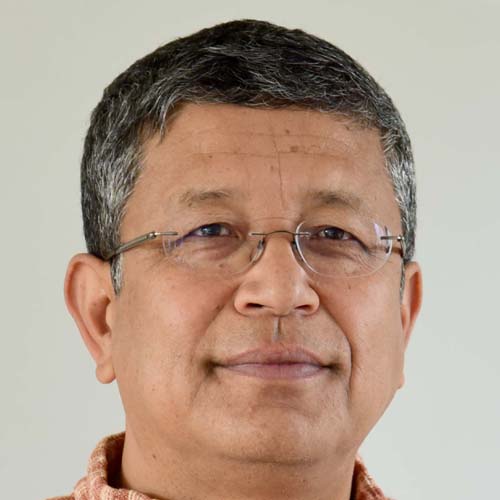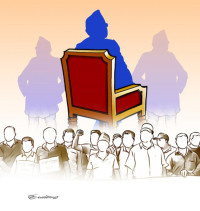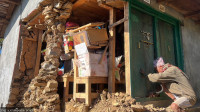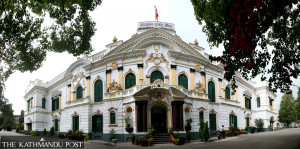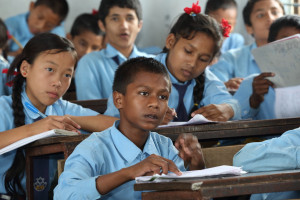Columns
Sherpas, Gurkhas and the ghosts of the Himalaya
It took more than 100 years, but recognition has finally come by Nepali mountain climbers.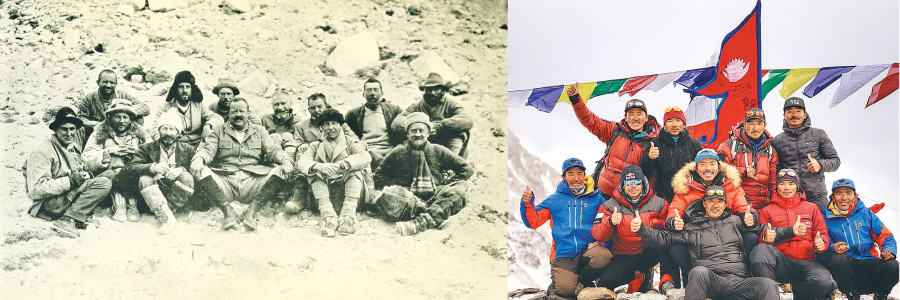
Deepak Thapa
The climbing of mountains by Nepalis, usually Sherpas that is, has a feel akin to a dog biting a man—as in the old journalistic aphorism about news being made only when it is the other way round. Not when it is a commonplace. Yet the winter ascent of K2 on 16 January 2021 by a team of 10 Nepalis managed to catch the imagination of people the world over. After the initial rush of news stories was over, the feature items have continued, and it has been uniform praise for the dectet of heroes.
The success on K2 had everything going for a good story. The drama was there obviously, and not only in the danger of trying to scale it where all previous attempts had failed. That three separate groups of Nepali climbers decided to team up in the name of the country was something else. Most striking of course was how the 10 of them waited for each other just below the summit so that they could all ascend together to the top. ‘Superb attitude,’ is how Rahul Gandhi, the Indian political leader, described it, and one could not agree more.
As has been pointed out, experience and skills were not in short supply among the 10 climbers. The group had more than 100 ascents of 8,000-metre peaks among them, with Mingma Gyalje Sherpa and Nirmal Purja accounting for a third of those. Purja, of course, has become the breakout star of the Nepali fraternity of climbers in recent years. He had shot to worldwide fame with that famous photo from 2019 showing scores of climbers queued up on a ridge below the summit of Everest. At that time, he was on his way to set a record of climbing all 14 of the 8,000-ers in the fastest time, a feat he managed easily enough within months. It was Purja who announced to the world what the K2 summiteers had achieved as a group.
I have to admit to still getting used to the fact that, unlike in most accounts of mountaineering, the main—and only—protagonists in the K2 story are Nepalis. More importantly, the recognition from the climbing world has in almost all the cases been ungrudging, and very often driven by awe. It took more than 100 years, but recognition has finally come by our climbers. What Mingma Gyalje told American climber Alan Arnette before heading out to K2 reflects the frustration Sherpas have felt for so long: ‘For all the other 8000ers summited in winter, no Shepra [sic] was with them, so this is an opportunity for Sherpa to demonstrate their strength…So this climb is for all the Sherpa community who are so known because of our friends and clients from different foreign countries.’
Remembering the beginning
In the second half of the 19th century, like Nepali peasants everywhere, Sherpas, too, suffered from the high taxation imposed by the Rana regime after it rose to power. Following the tradition of many Nepalis even till today, Sherpas took up circular migration to Darjeeling and back home to Solukhumbu. Anthropologist Sherry Ortner writes that unlike many other Nepali groups engaged in tea plantations in Darjeeling, the transient Sherpas appear to have found a niche in construction work that would have been booming at the time. It could have been their engagement as construction labourers that led to their being hired as porters when mountaineering began in the eastern Himalaya. And when the Everest expeditions began, with Darjeeling on the gateway to Tibet, the only route open to the mountain at the time, it was natural that Sherpas would provide the bulk of the porterage.
The Scot, Dr Alexander Kellas, is credited with forging Sherpas’ connection with climbing. What is not so well known is that in 1907, the same year Kellas first hired Sherpas to go climbing with, there were also the Norwegians, Carl Wilhelm Rubenson and Ingvald Monrad Aas, who had Sherpas in their own expedition. Both parties came back highly impressed with Sherpas. Rubenson wrote: ‘Properly fitted out and with kind treatment they will achieve the impossible...What success we achieved was due to the willingness and bravery of these people.’
Kellas was equally gushing: ‘[They are the most splendid fellows…the Nepalese Sherpas [are] superior to all others. They are strong, good natured if fairly treated...’ It is instructive that both mentioned the need to treat Sherpas well. It cannot be a trait that is innate to Sherpas. More likely that in those days of sanctioned discrimination, the realisation must have sunk in that despite Sherpas’ lowly station as porters, up on the mountain survival depends on everyone—Sherpa and saheb—working together.
It was Kellas who continued to hire Sherpas for his many climbing trips in the following years, and also put together a team of around 50 Sherpas for the 1921 British reconnaissance expedition of Everest, the first of its kind on the highest peak in the world. Sadly, he died in Tibet during the march to the base camp but his estimation of Sherpas as climbers outlived him.
The 1922 assault on Everest also saw Sherpas hired in droves. But it also heralded another inescapable fact of climbing—death. After seven Sherpas were lost in an avalanche, the legendary George Mallory, who had also been caught in the same avalanche, wrote that the ‘tragic calamity was naturally the end’ of the expedition. He added: ‘The surviving porters who had lost their friends or brothers behaved with dignity, making no noisy parade of the grief they felt… [T]he work of carrying up our camps on Mount Everest is beyond the range of a simple contract measured in terms of money; the porters had come to have a share in our enterprise, and these men died in an act of voluntary service freely rendered and faithfully performed.’
It says a lot about times that despite the obvious sorrow felt by Mallory and the others, there is no mention in the official account of that expedition of the names of any of the Sherpas who lost their lives. There is one Nepali though who figures prominently in the story: Tejbir Budha. As a Gurkha soldier in an expedition commanded by a general from a Gurkha regiment background, and with a British Gurkha officer from his own battalion as a climbing member, it was only natural that Tejbir would be given a much more prominent role in the climb.
Tejbir did not disappoint his superiors, even though on his last run he collapsed at 26,000 feet (nearly 8,000 metres). The expedition leader was ‘pretty certain that Tejbir's breakdown was largely due to his not having a windproof suit’. That and the fact that he was carrying a weight 10 pounds heavier than his two companion sahebs. He was, after all, little more than a porter. As one of the climbers wrote: ‘Our scheme of attack was to take Tejbir with us as far as the North-east shoulder, there to relieve him of his load and send him back.’
The entire 1922 climbing squad was awarded Olympic gold medals for mountaineering during the 1924 Winter Olympics for their exploits on Everest. The 13 western members of the expedition had been awarded the medal initially. Later, Tejbir and the seven Sherpas who had perished on the mountain were also given the medals. None of the other ‘natives’—even those Sherpas who had survived the same avalanche—was given that honour.
A century on, Tejbir retains the distinction of being only Nepali to have received an Olympic gold medal; probably because the deceased Sherpas had been hired in Darjeeling, their nationality was listed as Indian. The two Gurkhas, Tejbir Budha and Nirmal Purja, thus, neatly bookend the hundreds of Sherpas who have given the climbing sport so much, including the ultimate sacrifice in 1922 by these seven: Narbu [Norbu?] Sherpa, Lhakpa Sherpa, Pasang Sherpa, Pembra [Pemba?] Sherpa, Antarge [Dorje?] Sherpa, Temba Sherpa and Sange Sherpa.




 8.12°C Kathmandu
8.12°C Kathmandu